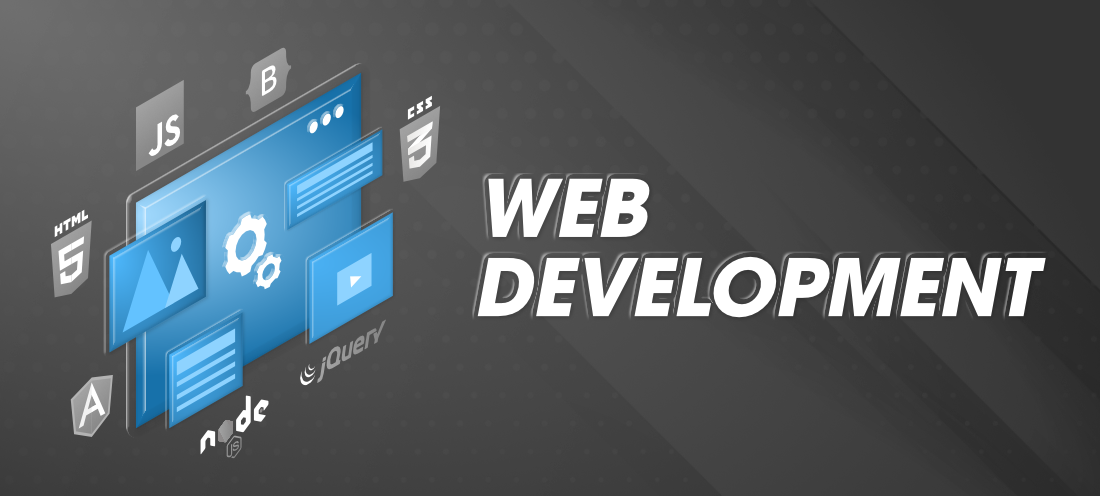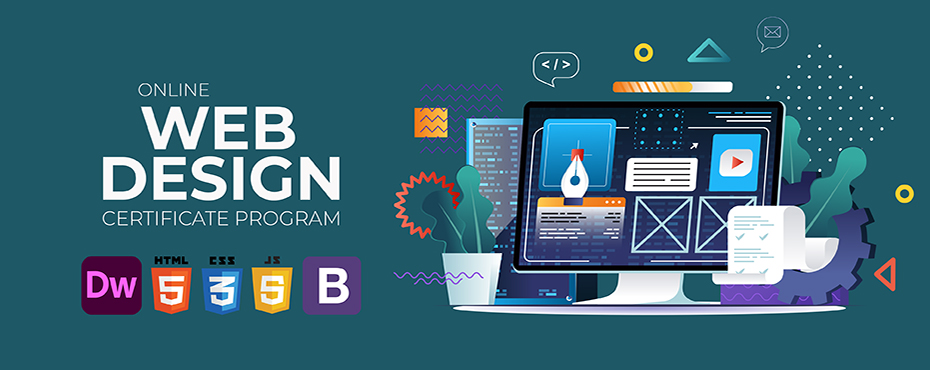All Categories
Featured
Table of Contents
- – Redtree Web Design - Pittsburgh Tips and Tricks:
- – Web Design Tutorials By Envato Tuts+ Tips and...
- – Arch Web Design: Top-rated Web Design Agency ...
- – What Is Web Design? A Comprehensive Guide - W...
- – 34 Of The Best Website Designs To Inspire You...
- – Design Principles - U.s. Web Design System (U...
- – Beginner's Guide: How To Learn Web Design At...
- – What Is Web Design (And How Do I Get It Righ...
- – Responsive Design Best Practices - Google Se...
- – 34 Of The Best Website Designs To Inspire Yo...
- – What Is Web Design? A Comprehensive Guide - ...
Redtree Web Design - Pittsburgh Tips and Tricks:
Quick summary Usability and the utility, not the visual style, figure out the success or failure of a site. Considering that the visitor of the page is the only person who clicks the mouse and therefore chooses whatever, user-centric design has actually developed as a standard approach for effective and profit-oriented website design - web design frederick md.
and the energy, not the visual style, identify the success or failure of a site. Given that the visitor of the page is the only individual who clicks the mouse and therefore decides everything, user-centric style has become a standard technique for successful and profit-oriented web design. If users can't utilize a function, it may as well not exist.
g. where the search box must be placed) as it has currently been done in a variety of posts; rather we focus on the techniques which, utilized effectively, can lead to more sophisticated design choices and streamline the procedure of viewing presented information. Please see that you may be interested in the usability-related posts we have actually released prior to: Concepts Of Good Website Design And Reliable Web Style Guidelines, In order to utilize the concepts properly we first need to understand how users communicate with sites, how they think and what are the fundamental patterns of users' behavior.
Web Design Tutorials By Envato Tuts+ Tips and Tricks:
Visitors look at each brand-new page, scan some of the text, and click on the first link that captures their interest or vaguely looks like the thing they're looking for. There are large parts of the page they don't even look at. A lot of users browse for something interesting (or helpful) and clickable; as quickly as some appealing candidates are found, users click.
If a page offers users with high-quality material, they are ready to compromise the material with advertisements and the design of the site. This is the reason not-that-well-designed websites with top quality material get a great deal of traffic over years. Content is more vital than the style which supports it.

Very simple principle: If a site isn't able to satisfy users' expectations, then designer failed to get his task done appropriately and the company loses cash. The greater is the cognitive load and the less intuitive is the navigation, the more ready are users to leave the website and search for alternatives.
Arch Web Design: Top-rated Web Design Agency For Saas ... Tips and Tricks:
Neither do they scan webpage in a linear fashion, going sequentially from one website section to another one. Instead users satisfice; they select the very first affordable choice. As quickly as they discover a link that appears like it may cause the objective, there is an excellent opportunity that it will be right away clicked.
It doesn't matter to us if we comprehend how things work, as long as we can utilize them. If your audience is going to act like you're designing billboard, then design fantastic billboards." Users wish to be able to manage their internet browser and count on the consistent information presentation throughout the site.
If the navigation and website architecture aren't instinctive, the variety of concern marks grows and makes it harder for users to comprehend how the system works and how to get from point A to point B. A clear structure, moderate visual clues and quickly identifiable links can assist users to find their course to their goal.
What Is Web Design? A Comprehensive Guide - Wix.com Tips and Tricks:

Since users tend to explore sites according to the "F"-pattern, these 3 declarations would be the very first components users will see on the page once it is loaded. The design itself is simple and intuitive, to understand what the page is about the user requires to search for the response.
When you've attained this, you can interact why the system is beneficial and how users can benefit from it. Do Not Misuse Users' Perseverance, In every project when you are going to offer your visitors some service or tool, try to keep your user requirements minimal.
First-time visitors are ready to, not filling long web kinds for an account they might never ever utilize in the future. Let users check out the site and find your services without forcing them into sharing personal data. It's not sensible to require users to go into an e-mail address to evaluate the feature.
34 Of The Best Website Designs To Inspire You In 2022 Tips and Tricks:
Stikkit is a perfect example for an easy to use service which requires almost nothing from the visitor which is inconspicuous and soothing. And that's what you desire your users to feel on your web website. Apparently, Termite requires more. The registration can be done in less than 30 seconds as the kind has horizontal orientation, the user doesn't even require to scroll the page.
A user registration alone suffices of an obstacle to user navigation to cut down on incoming traffic. 3. Manage To Focus Users' Attention, As sites provide both fixed and dynamic content, some aspects of the user interface attract attention more than others do. Clearly, images are more appealing than the text just as the sentences marked as vibrant are more attractive than plain text.
Focusing users' attention to particular locations of the website with a moderate usage of visual components can help your visitors to get from point A to point B without thinking of how it in fact is expected to be done. The less question marks visitors have, the they have and the more trust they can develop towards the company the website represents.
Design Principles - U.s. Web Design System (Uswds) Tips and Tricks:
Aim For Feature Direct exposure, Modern web styles are usually slammed due to their method of guiding users with visually appealing 1-2-3-done-steps, big buttons with visual effects and so on. From the design viewpoint these elements actually aren't a bad thing.
The site has 9 primary navigation choices which are noticeable at the very first glance. What matters is that the content is well-understood and visitors feel comfortable with the way they communicate with the system.
com gets directly to the point. No adorable words, no exaggerated statements. Instead a cost: simply what visitors are searching for. An optimum service for effective writing is touse brief and concise expressions (come to the point as rapidly as possible), usage scannable layout (classify the material, use numerous heading levels, use visual components and bulleted lists which break the circulation of consistent text blocks), use plain and objective language (a promo does not need to seem like advertisement; provide your users some reasonable and objective reason why they should utilize your service or stay on your website)6.
Beginner's Guide: How To Learn Web Design At Home - Medium Tips and Tricks:
Users are rarely on a website to delight in the design; moreover, in many cases they are looking for the information in spite of the design - web design frederick md. Strive for simpleness instead of complexity. From the visitors' point of view, the very best site style is a pure text, with no ads or further content obstructs matching precisely the query visitors used or the material they have actually been searching for.
Finch plainly presents the details about the site and provides visitors a choice of options without overcrowding them with unnecessary material. Not just does it help to for the visitors, but it makes it possible to perceive the details provided on the screen.
Complex structures are harder to check out, scan, examine and work with. If you have the choice in between separating 2 style segments by a visible line or by some whitespace, it's generally better to utilize the whitespace service. (Simon's Law): the better you handle to supply users with a sense of visual hierarchy, the much easier your material will be to perceive.
What Is Web Design (And How Do I Get It Right)? - 99designs Tips and Tricks:
The same conventions and guidelines must be applied to all elements.: do the most with the least quantity of cues and visual elements. 4 major points to be considered: simpleness, clarity, diversity, and emphasis. Simpleness includes just the elements that are essential for interaction. Clearness: all parts need to be developed so their meaning is not ambiguous.
Conventions Are Our Friends, Traditional style of site elements does not result in a dull web site. As they reduce the discovering curve, the need to figure out how things work. For example, it would be an usability headache if all sites had different visual presentation of RSS-feeds. That's not that various from our regular life where we tend to get utilized to fundamental concepts of how we organize data (folders) or do shopping (positioning of items).
understand what they're anticipating from a website navigation, text structure, search positioning etc. A common example from use sessions is to translate the page in Japanese (presuming your web users don't understand Japanese, e. g. with Babelfish) and provide your usability testers with a task to find something in the page of various language.
Responsive Design Best Practices - Google Search Central Tips and Tricks:
Test Early, Test Often, This so-called TETO-principle ought to be used to every web design project as use tests typically offer into significant problems and concerns related to a given layout. Test not too late, not too little and not for the wrong factors.
Some important points to keep in mind: according to Steve Krug, and screening one user early in the task is much better than testing 50 near the end. Accoring to Boehm's first law, mistakes are most frequent throughout requirements and style activities and are the more expensive the later they are eliminated.
That means that you design something, test it, fix it and after that check it again. There might be issues which haven't been discovered during the preliminary as users were virtually blocked by other problems. use tests. Either you'll be pointed to the problems you have or you'll be indicated the absence of significant design defects which remains in both cases an useful insight for your job.
34 Of The Best Website Designs To Inspire You In 2022 Tips and Tricks:

This holds for designers. After you've worked on a website for few weeks, you can't observe it from a fresh perspective any longer. You know how it is built and therefore you understand exactly how it works you have the wisdom independent testers and visitors of your site would not have.
It can be linked to other areas such as graphic style, user experience, and multimedia arts, but is more aptly seen from a technological standpoint. It has become a big part of individuals's everyday lives. It is difficult to imagine the Internet without animated graphics, various designs of typography, background, videos and music.

Throughout 1991 to 1993 the World Wide Web was born. Text-only pages could be seen utilizing a basic line-mode web browser. In 1993 Marc Andreessen and Eric Bina, developed the Mosaic browser. At the time there were multiple web browsers, nevertheless the bulk of them were Unix-based and naturally text heavy. There had actually been no integrated method to graphic design components such as images or sounds.
What Is Web Design? A Comprehensive Guide - Wix.com Tips and Tricks:
The W3C was developed in October 1994 to "lead the Web to its complete capacity by developing common procedures that promote its evolution and ensure its interoperability." This prevented any one company from monopolizing a propriety internet browser and programming language, which could have changed the result of the Web as a whole.
As this has taken place the technology of the web has likewise moved on. There have actually likewise been considerable changes in the method people utilize and access the web, and this has changed how sites are created.
Learn more about Lovell Media Group LLC or TrainACETable of Contents
- – Redtree Web Design - Pittsburgh Tips and Tricks:
- – Web Design Tutorials By Envato Tuts+ Tips and...
- – Arch Web Design: Top-rated Web Design Agency ...
- – What Is Web Design? A Comprehensive Guide - W...
- – 34 Of The Best Website Designs To Inspire You...
- – Design Principles - U.s. Web Design System (U...
- – Beginner's Guide: How To Learn Web Design At...
- – What Is Web Design (And How Do I Get It Righ...
- – Responsive Design Best Practices - Google Se...
- – 34 Of The Best Website Designs To Inspire Yo...
- – What Is Web Design? A Comprehensive Guide - ...
Latest Posts
Pueblo Web Design Tips and Tricks:
10 Principles Of Good Web Design - Smashing Magazine Tips and Tricks:
Web Design Software By Xara Tips and Tricks:
More
Latest Posts
Pueblo Web Design Tips and Tricks:
10 Principles Of Good Web Design - Smashing Magazine Tips and Tricks:
Web Design Software By Xara Tips and Tricks: